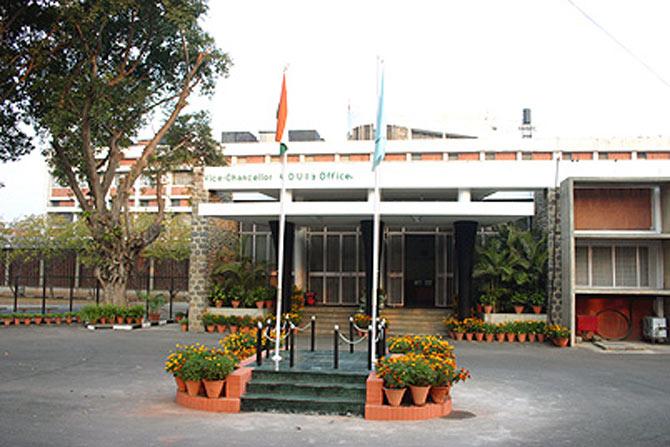 | « Back to article | Print this article |
Panjab University beats IITs in global rankings
In the recently released Times Higher Education World University Rankings, Panjab University makes a stunning entry among the top 400 universities in the world. Read on to find out how other institutes have fared in the list...
Which is the topmost institution of higher education in the country?
Before you mention one of the Indian Institutes of Technology (IIT), here’s a surprise.
The answer is Panjab University, according to the Times Higher Education World University Rankings.
While Panjab University, a new entrant, is placed at 226 among 400 institutions worldwide, IIT Kharagpur has slipped from 226 to 250 and IIT Roorkee is placed in the 351-400 band.
The two other new entrants are IIT Delhi and Kanpur, both in the 351-400 group.
“India increases its representation in the world rankings with five world top 400 universities.
No Indian university makes the top 200, but one new entrant is close to the elite group,” says a press statement issued by the Times Higher Education World University Rankings.
The improvement in rankings for Indian universities has come about as they “co-operated with Thomson Reuters, providing their data for analysis”. Thomson Reuters collects, analyses and verifies data, independently of Times Higher Education, which publishes the results.
Participation in the rankings is voluntary and free of charge. Phil Baty, editor of the Times Higher Education World University Rankings, says the results should be encouraging for India which now has five representatives in the top 400 -- a sign of growing commitment to the global rankings, a step towards improved quality.
Overall, California Institute of Technology holds on to the world number one spot for the third consecutive year, while Harvard University tied with Oxford regains second place, pushing Stanford University to fourth.
The Massachusetts Institute of Technology (fifth), Princeton University (sixth), the University of Cambridge (seventh), University of California, Berkeley (up one place to eighth), the University of Chicago (up one place to ninth) and Imperial College London (down two places to 10th) complete the top 10.
Top universities in Germany, France, Switzerland, the Netherlands, Russia, Belgium, the Republic of Ireland and Austria have all fallen while the top institutions in China, South Korea, Singapore and Japan have made gains.
The US remains dominant with seven institutions in the world top 10 and 77 in the top 200 (one more than last year).
London boasts four top-40 universities (up from three), more than any other city.
The increased representation for India in the rankings follows a two-day National Policy Dialogue in May on international rankings, when representatives of Times Higher Education were invited to meet senior university leaders by the Ministry of Human Resources Development and the Planning Commission.
At the meeting in New Delhi, Ashok Thakur, secretary of the ministry's department of higher education, said Indian institutions must no longer hide behind the “excuse” that the global ranking metrics and indicators were not suited to them.
“We must play the same game that the rest of the world is playing,” he said.
The Times Higher Education World University Rankings use 13 separate performance indicators to examine a university’s strengths against all its core missions: Teaching, research, knowledge transfer and international outlook.
Europe has generally fared badly this year.
While the UK’s number one, Oxford, holds on to the second place in the rankings, across the board the continent's top institutions have lost ground.
ETH Zürich, the world number one outside the US and the UK, slipped two places to 14th; Germany’s University of Munich fell out of the top 50; and it is a similar tale of woe for Belgium, France, the Netherlands, the Republic of Ireland and Austria.
In another set of rankings published last month by QS World University, IIT Delhi figured at 222, dropping from 212 in 2012.
As part of comprehensive global reviews, the 800-strong annual ranking included 11 Indian institutions in all, with the IITs leading the charge -- IIT Bombay at 233, IIT Kanpur at 295, IIT Madras at 313 and IIT Kharagpur at 346.
In the list of the top 50 universties in Asia, IIT Bombay led the fall, dropping five notches to 39th position from 34th last year.
While IIT Delhi fell two places to the 38th position against 36th last year, IIT Madras fell four positions to rank at 49 against 45 last year.

